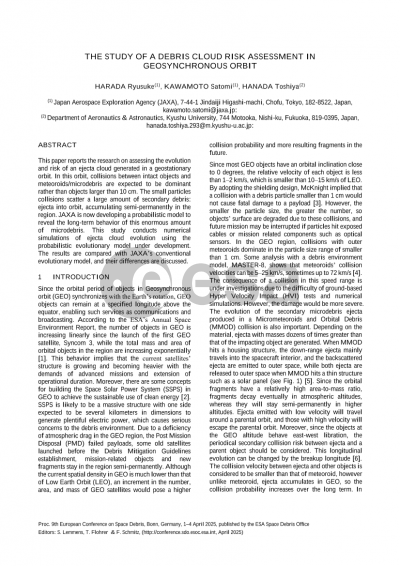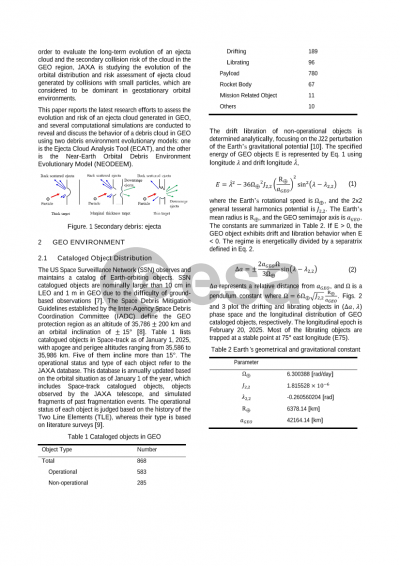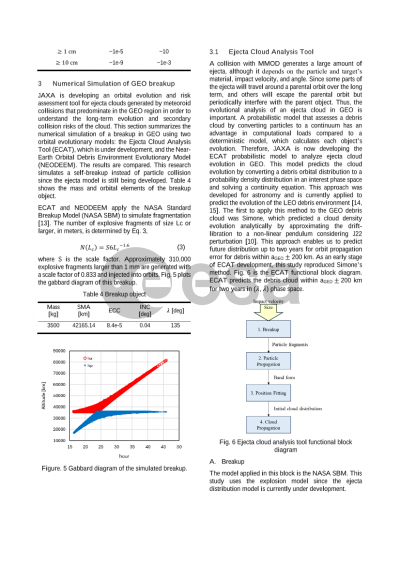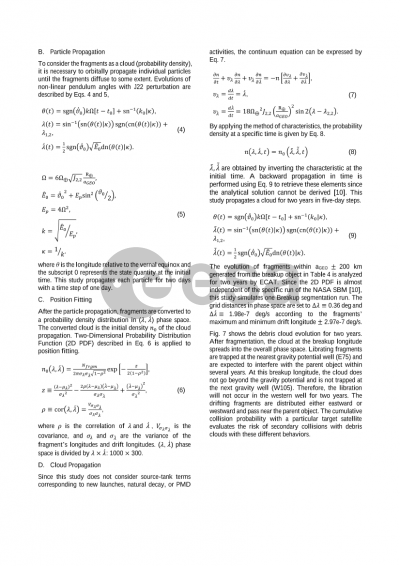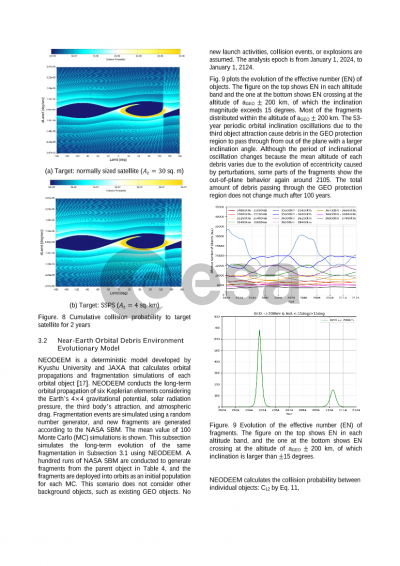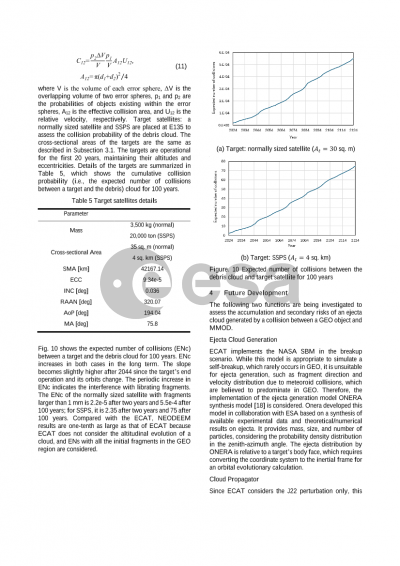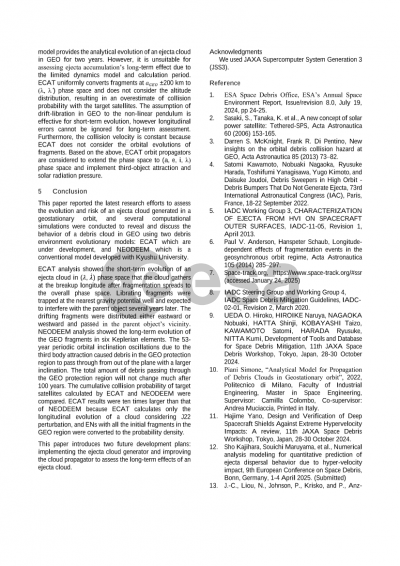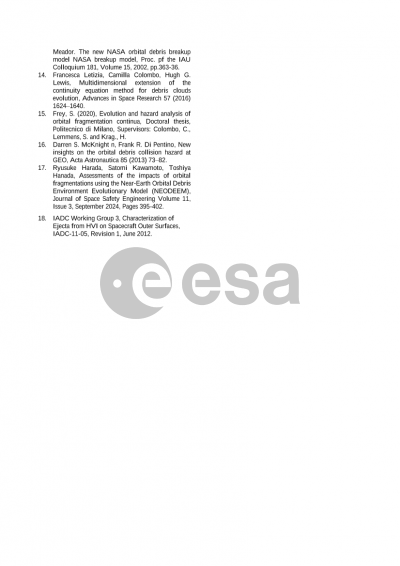Document details

Abstract
This paper evaluates the evolution of a debris cloud and assesses the collision risk to a spacecraft in geosynchronous orbit (GEO). Since the first GEO satellite, Syncom 3, was launched in 1964, the number of objects in GEO keeps increasing. With the demands of advanced missions and extension of operational duration, current satellites are becoming huger and heavier. Moreover, there are some concepts for building the Space Solar Power System (SSPS) in GEO to achieve the sustainable use of clean energy. SSPS is likely to be a massive structure with one side expected to be several kilometers in dimensions to generate plentiful electric power, which causes serious concern to the debris environment in GEO. An increment in the area and mass of a satellite poses a higher collision risk and more resulting fragments. Since the spatial density of artificial objects in GEO is still low, the probability of collision is lower than that of LEO, and the collision with meteoroids from outer space that exhausts a large number of small particles, ejecta, will be dominant. Once the ejecta is injected into GEO, it will exist in the orbit semi-permanently due to a deficiency of atmospheric drag, which causes the risk of secondary collisions in the long term.
Several computational simulations are conducted to reveal the behavior of a debris cloud in GEO using two debris environment evolutionary models: one is the Ejecta Cloud Analysis Tool (ECAT), and the other is the Near-Earth Orbital Debris Environment Evolutionary Model (NEODEEM). ECAT is a probabilistic evolutionary model under development at JAXA, and it simulates the evolution of a debris cloud by converting the cloud to a probability density distribution in a longitude and drift longitude phase space. NEODEEM is a deterministic evolutionary model developed by Kyushu University and JAXA, which calculates the orbital propagation, probability of collision, fragmentation, etc., of individual objects. This paper evaluates the relationship between debris cloud behavior and gravitational potential wells of Earth by changing the fragmentation longitude and assesses the probability of collision for a spacecraft crossing a debris cloud using ECAT. The out-of-plane conjunctions to a spacecraft are also assessed by focusing on the inclination evolution of a debris cloud using NEODEEM.
Preview
